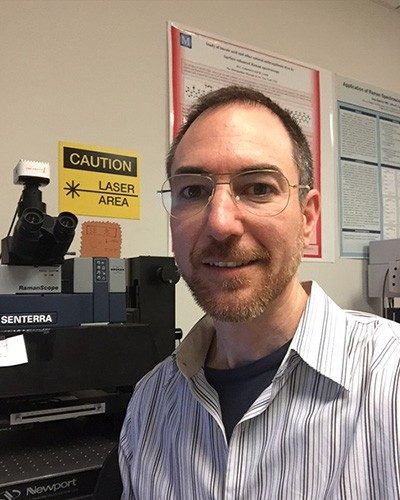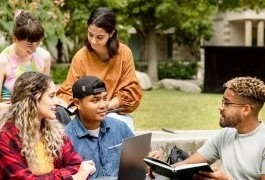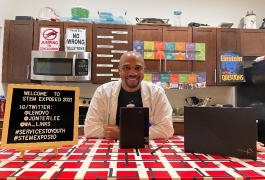Researcher Makes an Art of Preserving Priceless Pieces
- Research Scientist. Metropolitan Museum of Art
- Ph.D., Physical Organic Chemistry, University of Wisconsin-Madison
Eric Breitung helps art conservators preserve the priceless works of art at New York’s Metropolitan Museum of Art. He studies the ways that various art materials age and degrade, and he consults with the museum’s building engineers to produce an environment that helps prevent damage to everything from modern artwork made from polymers to ancient pieces made from metal.
How did you find your first chemistry related job after you graduated?
Breitung: I got my first chemistry job at General Electric’s R&D center through an on-campus recruiter, and I worked there for nine years after graduate school. I did research and development of thin films and coatings, which is indirectly related to what I do now. I hadn’t considered going into art, but I saw a job posting in 2007, when I was looking to relocate to New York City. I didn’t have the background to get into the art museum field right away, so I took a fellowship to get that experience. Afterward, I worked full-time at the Smithsonian and the Library of Congress in Washington, DC, for about five years before receiving my current job at the Met. Doing fellowships is very common, since there are few job openings in this field.

What personal talent or trait makes you a great fit for your job?
Breitung: My industrial experience at GE prepared me well on how to organize and lead projects while working collaboratively with others. I have a “jack of all trades” background, which is an asset in a field with a wide range of unresolved technical issues. I know how to run many instruments on a general level, rather than being an expert in a narrowly focused area. I use techniques as I need them.
What’s the best career advice you’ve received?
Breitung: When my physics professor said, “Go into chemistry, not physics” it got me into an area that was a much better fit to my interests.
What are your primary responsibilities in your current position?
Breitung: I work on the science that helps to preserve art. I determine how artists’ materials degrade, with a focus on effects due to atmospheric and physical environment. The materials I work on include nearly all modern and historic materials, from polymers to ancient metals. I consult with conservators and forensics experts, but my work is more about the analysis methods than the conservation work itself. I help conservators understand what they have, in terms of layer structures, for example, and how the layers are made. Most of my work involves organic analysis.
What do you like most about your job?
Breitung: I like the ability to work with creative, thoughtful people, where my hallways are filled with beautiful objects. I also like the freedom to explore solutions to technical problems applied to art through collaborations with both academia and industry.
What advice would you give students who are interested in following in your footsteps?
Breitung: Find a lab in a museum early on in your academic career and volunteer there. If the museum in your area does not have a science lab (most don’t), find a scientist or other professional expert (in chemistry, physics, statistics, math, computer science, etc.) on campus who might be interested in collaborating with your local museum’s conservation department or collections care manager. Essentially, get involved. Apply for internships at cultural heritage institutions (libraries, museums, archives). Archives and libraries also employ conservation scientists and some of the major institutions have paid summer internships.
You’ll likely need a master’s degree or Ph.D. to get a job in a museum, and you’ll certainly need experience in a museum (internship, fellowship, volunteer) before you’ll get that job. Chemistry professors can incorporate art conservation and related topics into their coursework, so you may be able to get involved at your local university. Spending time in a museum, archive, or library handling and working with objects is equally important.



